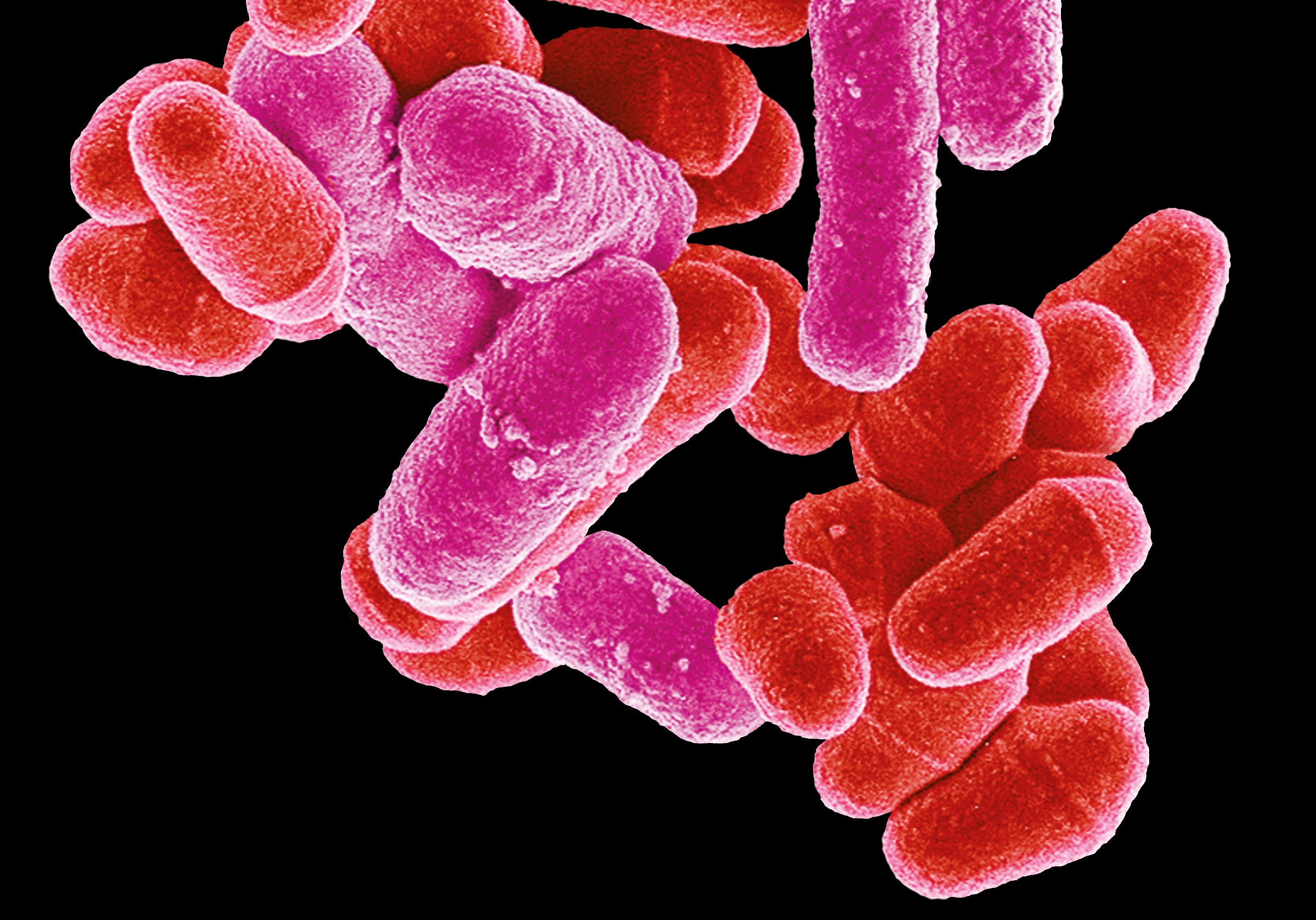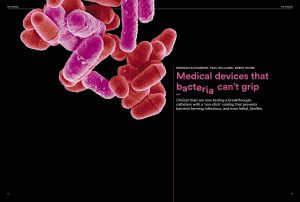
December 7, 2018, by Rob Ounsworth
Medical devices that bacteria can’t grip
In 2012, a team from the schools of Pharmacy and Life Sciences at the University of Nottingham discovered a bacteria-resistant material.
Six years on, the project has taken that ground-breaking discovery and translated it into a CE-certified, bacteria-resistant catheter, which is being trialled in six hospitals across the UK.
Morgan Alexander, Professor of Biomedical Surfaces, who led the team that made the crucial discovery, said: “This has gone all the way from a discovery of a new class of materials all the way to clinical trials, and that’s a massive achievement.”
This outstanding success was recognised at the University’s Knowledge Exchange and Impact Awards 2018, where the bacteria-resistant plastics project picked up the Faculty of Science prize.
The breakthrough came after others had tried to search for polymer coatings that would kill bacteria. Paul Williams, Professor of Molecular Microbiology, says the team thought differently by asking: “What kind of surface would bacteria not like?”
In 2012, the university published a major paper in Nature Biotechnology. It generated considerable interest, but a proposal that stood out came from a small and recently formed manufacturer – Camstent – based in Cambridge, which developed a coated catheter.
Derek Irvine, Professor of Materials Chemistry, Faculty of Engineering, recalls: “A lot of the work we did initially was trying to define polymer structures that would give the level of flexibility needed to handle a catheter without actually damaging the coating.”
Once the team was satisfied that they had achieved that flexibility while still retaining antimicrobial and antibacterial properties, CE approval was the next goal, opening the door to trials on patients.
Urinary tract infections from catheters, caused by communities of bacteria clinging to their surfaces, account for 38% of all healthcare associated infections (HAIs) and places a huge burden on the NHS.
Professor Williams added: “Millions of urinary catheters are used every day around the world, and anyone who has a catheter for longer than a week is likely to get an infection. These materials could be a major breakthrough.”

The story in Vision magazine. Please subscribe for more stories about the impact of our world-class research
Read more about this inspirational story in Vision, the University’s research and knowledge exchange magazine.
And look out for how our research is giving infection the slip in Discovery. For the World, a University campaign celebrating the impact of our world-class research on lives across the world.
#fortheworld
No comments yet, fill out a comment to be the first


Leave a Reply